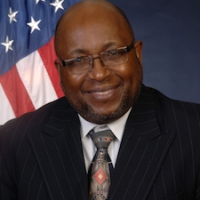Oct082015
Posted at 5:45 PM
Post by Dr. Willie E. May
At more than 2,300 events across the country, Manufacturing Day 2015 gave tens of thousands of people the opportunity to see firsthand the many benefits modern manufacturing brings to our communities and economy. I was fortunate to see the potential that innovations in manufacturing offer on a more personal level when I spent the day with a group of students from Charlottesville High School as they put their science, technology, engineering and math (STEM) skills to very good work.
For a few hours Friday morning, the students concentrated on fitting together 3D printed plastic components to make prosthetic hands for children in need. The effort was organized by a volunteer group at Northrop Grumman Marine Systems in Charlottesville, Va.
The students and I were guests of Northrop, along with representatives from Virginia’s Manufacturing Extension Partnership center, GENEDGE, and local agencies and community colleges. Northrop provides materials so the students can use their school’s 3D printers to make the components. Its staff members also serve as mentors for the class project that introduces the high schoolers to computer modeling and 3D printing. The hands will be distributed by an international volunteer community, called e-NABLE, which was initiated by a prop maker and a carpenter, who initially partnered to help a single child.
Now their movement brings together thousands of people around the world, including these Charlottesville students. As I watched their determination to get each piece into the right position, I was moved by the power of this burgeoning technology to change lives. And I was impressed by how seriously the students took their task. They carefully threaded and tested wires and tightened screws to make sure the hands worked properly. With a simple wrist movement, the young people who receive these prosthetic hands will be able to grasp a toy or hold a friend’s hand, many for the first time.
All this was made possible by a technology developed for commercial manufacturing. It was a single engineer who saw the potential of a machine that could quickly turn computer designs into working prototypes, but I’m sure he never imagined where his technology would go and the good it would do. That’s the wonderful thing about working in STEM fields. You get to investigate new ideas or old phenomena that can lead to incredible innovations.
At NIST, we study the smallest particles to make clocks so accurate they can measure the effects of relatively and to understand how we might build a quantum computer that relies on teleportation. We improve our measurements so doctors have better tools to treat disease, and manufacturers can make new and better products.
In addition to participating in the prosthetic hand project, the students learned about the many opportunities that await them if they choose to use their STEM skills in manufacturing. We saw examples of how Northrop engineers use their skills building systems for the U.S. Navy. Northrop’s staff was clearly proud of their work, and their participation in Manufacturing Day, which they’d turned into a weeklong celebration. Nearly everyone in the building was sporting a MFG Day logo t-shirt.
I’m grateful for the opportunity to have spent the day with those dedicated workers and students. It was a great reminder to me of how far manufacturing reaches into our communities. And it was a great activity to show students how they can use their STEM skills to innovate and create, and do cool things to make the world a better place. This is what Manufacturing Day is all about.




